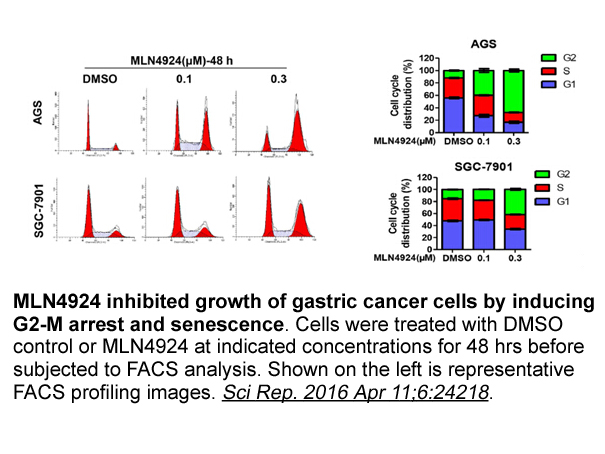Archives
br Experimental protocols br Results and discussion br
Experimental protocols
Results and discussion
Conclusion
15-LOX-1 is an important mammalian lipoxygenase which plays an important role in the biosynthesis of leukotrienes, lipoxins and other signalling molecules. These signalling molecules play a regulatory role in several respiratory diseases and thus represent important targets for the development of new drugs. Herein we present the first study that identifies Ru(II) complexes as novel inhibitors of 15-LOX-1. Two different types of complexes were tested with the general formulas: [Ru([9]aneS3)(dmso)(N,N- or N,O-donor ligand)](PF6)2 and [(η6-p-cymene)RuCl(O,O-ligand)]Cl. Among the seven tested Ru(II) complexes, two were newly synthesized (C1a and C1b). Both novel complexes were completely characterised and also their crystal structures have been determined. The data reported herein reveal four Ru(II) complexes as inhibitors of 15-LOX-1 with a potency in low micromolar range, whereas the respective free ligands showed no inhibition of the enzyme. Enzyme kinetic analysis of a Ru(II) complex (C1a) showed uncompetitive inhibition, which indicates that it binds to the substrate bound enzyme. In this study, we identify lipoxygenases as a new class of Gefitinib that is inhibited by Ru(II) complexes, which is important for a better understanding of the action of ruthenium based drugs.
Acknowledgements
We are grateful for financial support from the junior researcher grants for K.T. and S.S., and the program Grant P1-0175 of the Slovenian Research Agency (ARRS). We thank the EN→FIST Centre of Excellence, Dunajska 156, SI-1000 Ljubljana, Slovenia, for use of the SuperNova diffractometer. A great gratitude goes also to the support by COST action CM1105, especially to the WG5. We acknowledge the Netherlands Organisation for Scientific Research (NWO) for providing a VIDI grant (016.122.302) to F.J.D. We acknowledge T. Holman, University of California, Santa Cruz, for providing the h-15-LOX-1 plasmid. We acknowledge A. Casini, University of Groningen, The Netherlands, for helpful advice and discussion.
Introduction
Pulmonary arterial hypertension (PAH) is a rare and fatal disease characterized by a progressive increase of mean pulmonary arterial pressure, eventually resulting in increased right ventricle afterload and death. Although current therapeutics targeting pulmonary vascular endothelium significantly improve the survival rate of PAH patients, they cannot stop the progression of distal vascular remodeling [1], [2]. The pathological lesions of vascular remodeling include medial hypertrophy, and intimal proliferative and fibrotic alteration. It  is well known that medial hypertrophy is primarily due to the phenotype alteration of pulmonary arterial smooth muscle cells (PASMCs). Such alterations are characterized by excessive proliferation and apoptosis-resistance [3].
There are multifactorial contributors to the remodeling process, including endothelin-1, prostacyclin, transforming growth factor β family, nitric oxide, and ion channels [3]. Unfortunately, the cellular mechanisms underlying the phenotype alteration of PASMCs are still incompletely understood since the pathways mentioned above only elucidate parts of, but not all the changes in PAH. 15-hydroxyeicosanoid (15-HETE) is a metabolite of arachidonic acid (AA) through the 15-lipoxygenase (15-LOX) pathway, and has been shown as a potent vasoconstrictor in the pulmonary artery [4]. Extensive studies have shown that the 15-LOX/15-HETE signaling pathway is involved in the development of PAH (especially hypoxia-evoked PAH) (see review in [5]), through activated Rho-kinase (ROCK) pathway [6], nuclear factor-kappa B [7], and p38 mitogen-activated protein kinases [8], [9].
Transcription factors which bind to DNA promoter regions and regulate the expression of growth-related genes have been implicated in PASMC proliferation. Transcription factors including hypoxia inducible factor 1α (HIF-1α), nuclear factor-kappa B, octamer-binding transcription factor 4 (Oct-4) and Notch-3 are known regulators of PASMC proliferation, but studies to date have not yielded any therapeutics targets for PAH [3]. Hence, there remains a need to explore novel transcription factors involved in PASMC proliferation and apoptosis-resistance. Activator protein-1 (AP-1) formed by homo- or hetero-dimerization between Jun (c-Jun, Jun-B, Jun-D) and Fos (c-Fos, FosB, Fra-1, Fra-2) family proteins has been reported in many cancers, suggesting a pivotal role of AP-1 in tumor progression and metastasis [10], [11], [12]. Since cancer cells and PASMCs from PAH share similar characteristics, such as extensive proliferation and resistance to apoptosis, we hypothesize that AP-1 is involved in 15-HETE-mediated hypoxia-triggered PASMC phenotype alteration.
is well known that medial hypertrophy is primarily due to the phenotype alteration of pulmonary arterial smooth muscle cells (PASMCs). Such alterations are characterized by excessive proliferation and apoptosis-resistance [3].
There are multifactorial contributors to the remodeling process, including endothelin-1, prostacyclin, transforming growth factor β family, nitric oxide, and ion channels [3]. Unfortunately, the cellular mechanisms underlying the phenotype alteration of PASMCs are still incompletely understood since the pathways mentioned above only elucidate parts of, but not all the changes in PAH. 15-hydroxyeicosanoid (15-HETE) is a metabolite of arachidonic acid (AA) through the 15-lipoxygenase (15-LOX) pathway, and has been shown as a potent vasoconstrictor in the pulmonary artery [4]. Extensive studies have shown that the 15-LOX/15-HETE signaling pathway is involved in the development of PAH (especially hypoxia-evoked PAH) (see review in [5]), through activated Rho-kinase (ROCK) pathway [6], nuclear factor-kappa B [7], and p38 mitogen-activated protein kinases [8], [9].
Transcription factors which bind to DNA promoter regions and regulate the expression of growth-related genes have been implicated in PASMC proliferation. Transcription factors including hypoxia inducible factor 1α (HIF-1α), nuclear factor-kappa B, octamer-binding transcription factor 4 (Oct-4) and Notch-3 are known regulators of PASMC proliferation, but studies to date have not yielded any therapeutics targets for PAH [3]. Hence, there remains a need to explore novel transcription factors involved in PASMC proliferation and apoptosis-resistance. Activator protein-1 (AP-1) formed by homo- or hetero-dimerization between Jun (c-Jun, Jun-B, Jun-D) and Fos (c-Fos, FosB, Fra-1, Fra-2) family proteins has been reported in many cancers, suggesting a pivotal role of AP-1 in tumor progression and metastasis [10], [11], [12]. Since cancer cells and PASMCs from PAH share similar characteristics, such as extensive proliferation and resistance to apoptosis, we hypothesize that AP-1 is involved in 15-HETE-mediated hypoxia-triggered PASMC phenotype alteration.